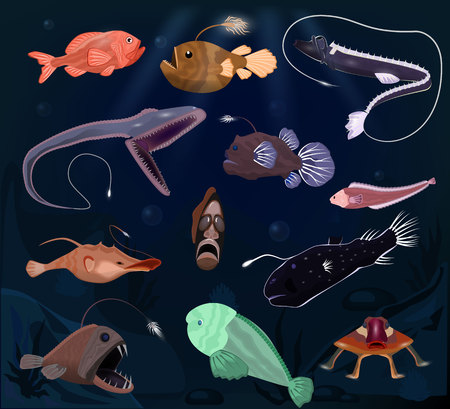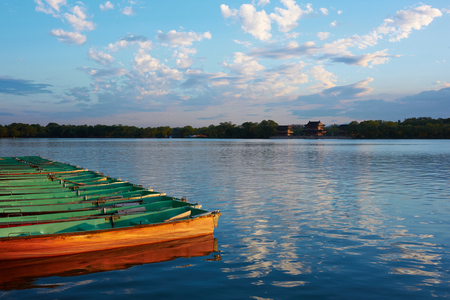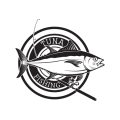1. Introduction to Wreck Fishing for Pollock and Ling in UK Waters
Wreck fishing is a time-honoured tradition along the British coastline, attracting anglers from all walks of life. The waters surrounding the UK are littered with countless shipwrecks, both ancient and modern, each one serving as a haven for thriving marine ecosystems. Among the most sought-after species around these underwater structures are pollock and ling—two powerful predators that offer both sporting challenge and culinary reward. Wrecks provide shelter, food, and ideal hunting grounds for these fish, making them prime hotspots for keen sea anglers. Yet, fishing over wrecks comes with its own unique set of challenges: unpredictable currents, snag-prone debris, and the elusive behaviour of target species all demand skill and adaptability. As more anglers take to the seas in search of that next personal best, the debate continues—do live baits or artificial lures yield better results when targeting pollock and ling off British wrecks? This article dives into both approaches, exploring what works best amidst the rugged beauty and rich history of UK waters.
2. Understanding Live Baits: Choices, Methods, and Effectiveness
When targeting Pollock and Ling around British wrecks, selecting the right live bait is crucial for success. Let’s break down which live baits are most effective, how to source them locally along UK coasts, and the practical rigging approaches that experienced anglers use for these species.
Preferred Live Baits for Pollock and Ling
Both Pollock and Ling are opportunistic predators, but each has distinct preferences. The table below summarises the top live bait options for UK waters:
| Species | Top Live Baits | Why They Work |
|---|---|---|
| Pollock | Sandeel, Launce, Mackerel Strip (live), Pouting | Sandeels and launce mimic natural prey; lively mackerel strips trigger aggressive strikes; pouting are abundant on wrecks and irresistible to larger Pollock. |
| Ling | Pouting, Poor Cod, Whiting, Small Pollock | Ling favour bottom-dwelling prey; pouting and poor cod are readily available near wrecks; whiting and small pollock offer substantial size for big ling. |
Sourcing Live Bait Locally in the UK
Local sourcing keeps your approach sustainable and effective. Here’s how to reliably gather your live baits before a session on the wrecks:
- Sandeels/Launce: Use a small seine net or a sandeel trap in shallow sandy bays during low tide. Early morning is best along South West and Welsh coasts.
- Mackerel: Feathering from piers or boats using Sabiki rigs in summer months yields fresh bait; keep alive in a well-aerated bucket.
- Pouting/Poor Cod: Drop small hooks with ragworm or mackerel strips down to the structure of the wreck – ideal when already anchored up.
- Whiting/Small Pollock: Light tackle fishing over rough ground or close to wrecks will produce these as bycatch—use immediately as bait.
Tried-and-Tested Rigging Tips for British Wrecks
The way you rig your live bait can make all the difference when fishing over deep-water wrecks. Here are some proven techniques:
- Running Ledger Rig: Perfect for both Pollock and Ling—allows livebait to swim freely but stay near the seabed where predators hunt.
- Paternoster Rig (with sliding snood): Keeps bait just above snaggy structure, reducing lost tackle while presenting bait naturally in the current.
- Circle Hooks: Use strong, appropriately sized circle hooks to ensure better hook-ups without deep-hooking fish—essential for catch-and-release ethics.
- Bait Elastic: Secure soft-bodied livebaits like sandeel to prevent them being stripped off by smaller fish without impeding movement.
- Bait Keepers: If you’re boat fishing all day, invest in a floating bait keeper or drop net to keep your livebaits fresh over the side.
Quick Reference: Best Practices Table
| Bait Type | Rig Recommendation | Main Target Species | Extra Tip |
|---|---|---|---|
| Sandeel/Launce | Paternoster with short snood | Pollock | Lip-hook gently to maximise movement and lifespan underwater. |
| Pouting/Whiting/Poor Cod | Running ledger with long trace | Ling & Large Pollock | Hook through upper jaw and out nostril for natural presentation near bottom. |
| Mackerel (live strip) | Paternoster with single hook trace | Pollock (big specimens) | Add a small float bead above hook to keep strip fluttering enticingly. |
Summary Tip:
If possible, match your livebait size to the target fish: bigger baits attract trophy-sized ling, while smaller sandeels are ideal for mid-sized pollock. Always handle livebaits gently—they’ll reward you with more bites!

3. Lure Fishing Tactics: Best Lures, Techniques, and Presentation
Lure fishing over British wrecks has become a staple for targeting pollock and ling, thanks to the effectiveness and versatility of modern artificial baits. Understanding which lures perform best, how to present them, and the right techniques can make all the difference between a blank day and a memorable session.
Top Lures for UK Wreck Fishing
Among UK anglers, three types of lures stand out: shads, jigs, and artificial eels. Shads—soft plastic bodies rigged on weighted jig heads—are particularly effective for pollock. Their paddle tails create a lifelike swimming action that triggers aggressive strikes when retrieved steadily through the water column.
Jigs, especially slim metal variants like pirk or slow-pitch jigs, are favoured for their ability to reach depth quickly and mimic wounded baitfish as they flutter near the wreck. Ling, in particular, respond well to heavier jigs bounced close to structure.
Artificial eels, such as sidewinders or redgills, remain classic choices. Their slender profiles imitate sand eels—a natural prey for both species—and work brilliantly when fished close to wreckage or over rough ground.
Effective Lure Techniques
The key with all lures is understanding how to work them at various depths where pollock and ling hunt. For pollock, try casting up-tide or across the drift, allowing your lure to sink before retrieving it slowly and steadily past the wreck’s structure. Periodic pauses or sharp lifts can trigger bites from following fish.
For ling, focus on vertical jigging right above or alongside the wreck. Drop your jig straight down and use short lifts or taps to keep it moving just off bottom—ling often strike as the lure rises after resting briefly on the seabed.
Lure Presentation Tips
- Colour Matters: Bright colours like orange, pink, or chartreuse often stand out in murky British waters, while more natural hues excel in clearer conditions.
- Vary Your Retrieve: Don’t stick to one speed; mix up slow rolls with sudden jerks or pauses to imitate injured prey and entice wary fish.
- Tackle Balance: Use strong braid (20-30lb) for better sensitivity and direct contact with your lure—essential around snag-prone wrecks.
Safety and Conservation Note
Always be mindful of lost tackle on wrecks: choose biodegradable options where possible and retrieve snagged gear carefully to minimise environmental impact.
4. Local Conditions and Tidal Considerations
When targeting pollock and ling over British wrecks, local environmental factors play a decisive role in determining whether live baits or lures will be most effective. Unlike other regions, the UK’s coastal waters are heavily influenced by dynamic tides, shifting water clarity, and pronounced seasonal variations. Understanding these elements can dramatically improve your catch rates.
Tidal Movements: Timing Is Everything
British tides are among the strongest in the world, especially along the English Channel, Bristol Channel, and parts of Scotland. Both pollock and ling respond to these tidal movements, but their behaviour changes according to flow strength and direction. As a general rule:
| Tide Phase | Bait Success | Lure Success |
|---|---|---|
| Slack Water | Moderate – Fish less active; live baits stationary can tempt lazy fish | Poor – Lures need current for action |
| Flood Tide (Incoming) | High – Bait scent disperses; predators on the move | Excellent – Lures mimic fleeing prey in current |
| Ebb Tide (Outgoing) | Moderate/High – Depends on bait presentation | Good – Fast retrieves mimic disoriented prey |
Water Clarity: Matching Your Method to Conditions
The clarity of UK waters fluctuates with weather patterns and tidal churn. After heavy rainfall or strong winds, visibility drops—especially around inshore wrecks. Here’s how it affects your approach:
- Muddy/Cloudy Water: Live baits outperform lures because their scent travels farther, attracting fish even when sight is limited.
- Clear Water: Lures come into their own as both pollock and ling hunt visually; brightly coloured or natural-patterned lures can provoke aggressive strikes.
Seasonal Shifts: Adapting With the Calendar
The UK’s seasons bring changes in water temperature, baitfish presence, and target species behaviour. Early spring sees pollock moving inshore to feed after spawning—lures fished fast can be deadly then. In contrast, during colder months or when wrecks are crowded with baitfish, live baits presented naturally near structure will often out-fish artificials.
Real-World Observations from British Anglers
Many seasoned UK wreck anglers report that during neap tides (when tidal flows are weaker), a well-presented live pout or launce will outshine any lure for big ling holding tight to the wreckage. Conversely, when spring tides run hard and water clears up, shads and metal jigs retrieved at speed often produce spectacular pollock catches mid-water.
Summary Table: Local Factors vs. Technique Success
| Condition | Best For Pollock | Best For Ling |
|---|---|---|
| Strong Current & Clear Water | Lures (shads, jigs) | Lures near bottom or large scented baits |
| Muddy Water & Slack Tides | Live baits close to structure | Live baits (whole fish) |
| Crowded Wrecks (summer/autumn) | Lures to cover ground quickly | Bigger live baits to select larger fish |
| Cold Months/Winter | Scented soft plastics or slow-moving live baits | Large live baits fished static or slowly moved along bottom |
If you adapt your tactics based on local tides, water clarity, and seasonal cues unique to the UK coast, you’ll maximise your chances—whether you favour live baits or lures.
5. Pros and Cons: Comparing Live Bait and Lure Fishing
When targeting pollock and ling over British wrecks, the debate between live baits and artificial lures is a hot topic among local anglers. Both methods have their unique strengths and occasional drawbacks, and seasoned UK wreck fishermen often choose according to conditions and target species.
Live Baits: The Natural Approach
Using live sandeels, pout, or mackerel is often considered the most effective way to tempt larger pollock and ling from deep structure. Live bait emits real scent and erratic movements that predators find irresistible. Many experienced wreck anglers swear by this method when fish are finicky or pressured.
Pros:
- Highly attractive to wary or well-fed fish due to natural movement and scent.
- Often results in bigger specimens, especially for ling lurking close to wreckage.
Cons:
- Requires time and effort to catch suitable bait at sea.
- Bait can be fragile; keeping them lively on a pitching boat can be challenging.
- More prone to tangling around wreckage if not carefully presented.
Lures: The Versatile Alternative
Modern soft plastics, shads, jigs, and pirks are widely used across the UK’s North Sea, Channel, and Celtic coasts. Lures allow for covering more ground quickly and can trigger aggressive strikes from active fish. They’re popular with charter skippers for both their convenience and effectiveness.
Pros:
- No need for fresh bait – just tie on a lure and fish straight away.
- Lures can reach great depths quickly, ideal for fast drifts over big wrecks.
- Less mess onboard; easy to swap colours or sizes to match conditions.
Cons:
- Sometimes less effective when fish are sluggish or feeding selectively on natural prey.
- Poor presentation or wrong retrieve can lead to missed takes or fewer bites.
Which Method Excels – And When?
If fish are actively hunting or there’s plenty of tidal run, lures can out-fish bait due to their ability to cover water rapidly. On slow days, especially with clear water and little drift, live baits may prove irresistible. In true British fashion, many top wreck anglers hedge their bets by bringing both options aboard – switching tactics as conditions dictate. Adapting your approach to the day’s mood is often what separates a blank from a box full of quality pollock and ling.
6. Tackle and Safety Essentials for British Wreck Fishing
Wreck fishing off the UK coast offers thrilling opportunities to target robust species like pollock and ling, but it also demands the right gear and a strong focus on safety. Here’s a practical breakdown of what you’ll need to maximise your success and stay safe when targeting these fish around British wrecks.
Rods & Reels: Choosing Your Main Tools
For pollock and ling, a boat rod rated between 20-30lb is ideal, giving you the backbone to handle powerful runs yet enough sensitivity for bite detection. Pair this with a robust multiplier reel—look for models with a smooth drag system and good line capacity (at least 300 yards of 30lb braid), as these fish often dive deep into structure. Consider a fast-tapered rod if you’re working lures; for live baiting, something with a bit more forgiveness in the tip helps keep baits lively and natural.
Rigs: Setups That Work
The classic running ledger rig remains the go-to for live baiting both species, offering direct contact with the bait and minimising resistance. For lure fishing, long flowing traces (4-6ft of 40-60lb mono) help your shads or jellyworms move enticingly in the current. Don’t forget sturdy swivels and strong hooks—a size 6/0 Aberdeen is popular for ling, while pollock will take slightly smaller patterns. Always check your knots; abrasion from wreckage can lead to heartbreak.
Safety Gear: A Non-Negotiable
The unpredictable nature of British waters means safety must come first. Wear an auto-inflating lifejacket at all times—conditions can change rapidly offshore. Carry a personal locator beacon (PLB) or at minimum, ensure your mobile is stored in a waterproof pouch. Deck boots with non-slip soles are essential, as are gloves for handling spiky fish and rusty wreck debris. A basic first aid kit should always be within reach, alongside sunblock—even on grey days, exposure can sneak up on you.
Other Practical Tips
If venturing out on a charter boat, listen closely to the skipper’s safety briefing and don’t hesitate to ask questions about emergency procedures. Keep tackle organised in waterproof boxes, and double-check that all gear is secured before steaming out—loose equipment is easily lost or causes accidents.
Summary
In summary, successful wreck fishing for pollock and ling in UK waters hinges on having strong yet sensitive rods, reliable reels loaded with braided mainline, well-tied rigs tailored to your chosen method, and unwavering attention to safety protocols. Invest in proper kit and preparation—it’s the difference between a cracking day on the wrecks and one you’d rather forget.
7. Practical Tips and Local Insights from British Anglers
When it comes to wreck fishing for Pollock and Ling off the British coast, nothing beats advice straight from those who know the waters best. Here’s a roundup of practical tips, common pitfalls, and some local lingo to help you get the edge on your next outing.
Actionable Advice for Wreck Fishing
1. Match Your Gear: British anglers recommend sturdy rods (20-30lb class) with reels that can handle both the weight of live baits and the resistance of larger lures. Braided line is preferred for its sensitivity when working over snaggy wrecks.
2. Bait Presentation Matters: When using live baits like mackerel or sandeel, hook them through the nose to keep them lively and natural-looking as you drift over the wreck.
3. Experiment with Lures: Shads in blue/white or rhubarb-and-custard colours often do the trick for Pollock, while Ling are partial to scented soft plastics bounced slowly along the bottom.
Common Pitfalls to Avoid
Ignoring Tides: Don’t underestimate tidal flow—slack water is often less productive. Most locals prefer fishing two hours either side of low or high tide.
Not Reading the Wreck: Failing to map out the structure before dropping lines can cost you gear and fish. Use a sounder to identify promising spots.
Poor Knot Tying: Strong knots are a must; many UK anglers swear by the Palomar or Uni knot for both bait and lure rigs.
Local Lingo You’ll Hear Onboard
- “Wrecking”: The act of targeting fish directly over sunken ships.
- “Bumping bottom”: Technique where lures or baits are allowed to touch the seabed, then lifted gently—crucial for enticing Ling.
- “Slack water”: Periods around tide changes when currents ease off—a prime time to target Pollock.
Extra Tip from Old Hands
If you hear someone say “The Pollock are hitting on the drop,” it means bites are coming as your lure sinks past mid-water—so stay alert and be ready to strike at any moment!
By following these practical insights, steering clear of common mistakes, and picking up some local terminology, you’ll stand a better chance of landing a cracking catch the next time you’re wreck fishing off Britain’s coasts.


